Traveling With Your Golf Clubs And Packing Your Golf Bag On Flights

Taking your golf clubs on a golfing destination vacation is a perfect plan. What golfer doesn’t want to play on the famous lush greens of Scotland or admire the stunning coastal views of California while golfing? But what’s the best strategy for traveling with your golf clubs?
You need to keep them protected during the journey and have them arrive safely at your destination. Not having your golf clubs when playing golf on vacation would be equivalent to going on a camping trip without your camping gear or a fishing trip without your fishing pole. Unthinkable.
But how do you keep your clubs and other precious (and expensive) golf gear safe on the flight? We have you covered, so read on, dear traveling golfer!
Understanding the Basics
Traveling with golf equipment presents unique challenges only sometimes encountered during regular weekend rounds. So, it’s imperative to understand the different types of golf bags to ensure that your clubs and gear reach your destination undamaged.
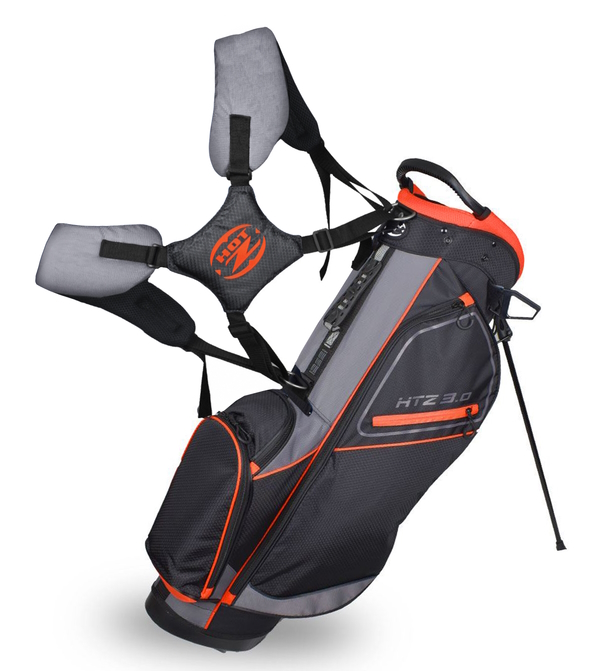
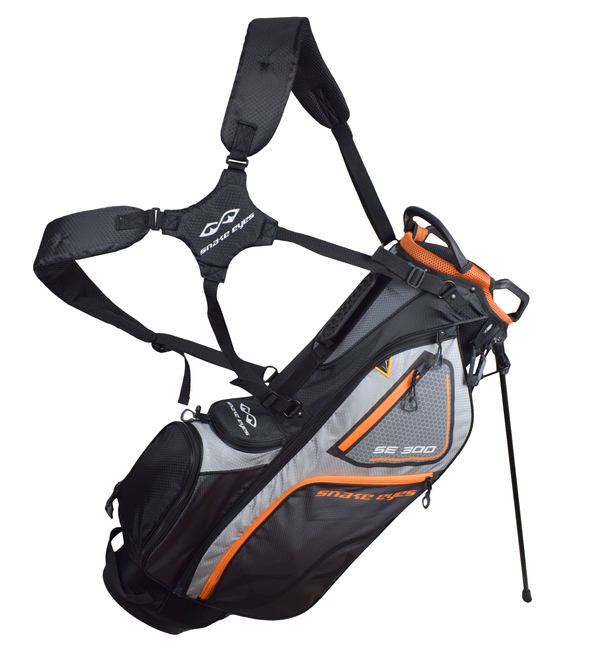
Regular Golf Bags
Your standard golf bags, the ones you use for local rounds, are designed with functionality, organization, and accessibility in mind.
They often feature:
- Multiple Dividers: To separate and protect individual clubs.
- Various Pockets: Designed to store balls, tees, gloves, and other golfing essentials.
- Lightweight Materials: To ensure they’re easy to carry around the course, whether on your shoulder or on a cart.
However, while these bags are excellent for their primary function, they’re not necessarily built to endure the bumps, drops, and rough handling that can occur during air travel. That’s where golf travel covers come in!
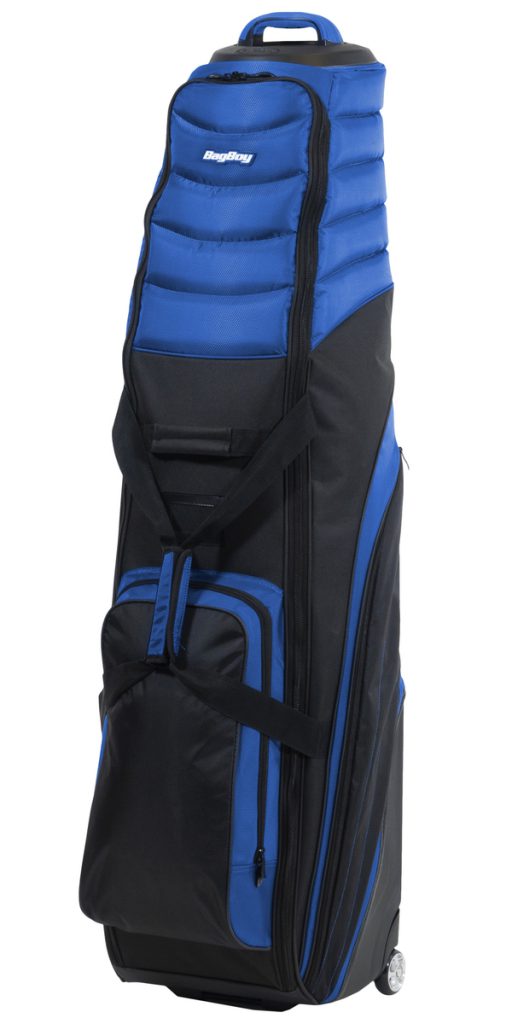
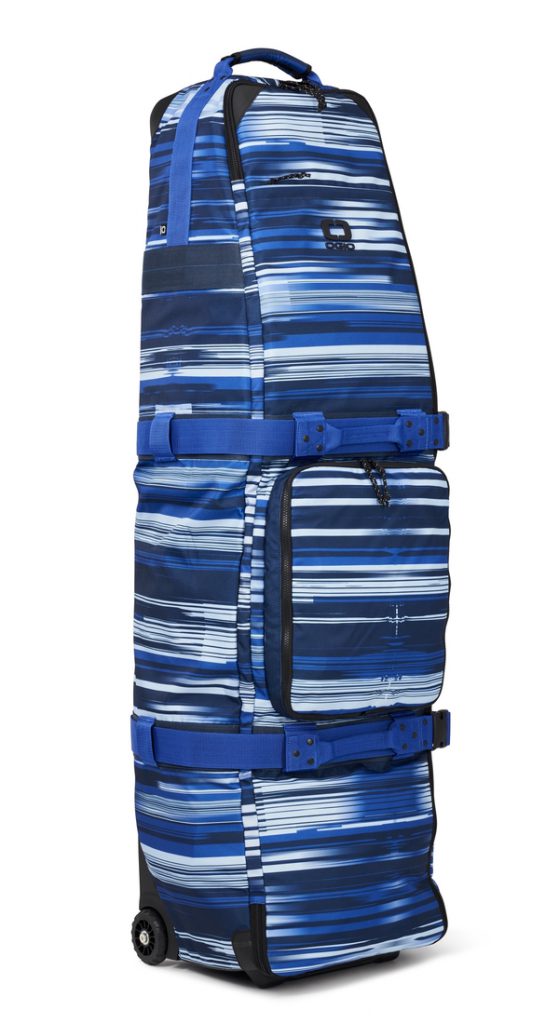
Golf Travel Cover Bags
Golf bag travel covers are specifically designed to offer additional protection that protects your regular golf bag. When looking into one, here are some features you should consider:
- Reinforced Padding: This padding, especially around the top where the club heads are, acts as a shield against potential impacts. Some even come with foam or inflatable mechanisms to tightly secure the clubs.
- Robust Materials: Often made from tougher fabrics or even hard-shell materials, these bags are meant to resist tears and punctures.
- Wheels: A game-changer when navigating through vast airport terminals, wheels make transporting your heavy gear a breeze. Look for sturdy, well-constructed wheels that can handle the weight.
- Sturdy Handles: Additional reinforced handles at various points on the bag can make lifting it (such as during check-in or collection) much more manageable.
- Lockable Zippers: For added security, especially when you’ve stored other items in the bag’s pockets.
- External Compression Straps: These help to compact the bag and ensure everything inside remains stable and secure.
Choosing the Right Travel Cover Golf Bag
When your clubs are snugly packed and ready for travel, the next pivotal step is selecting the ideal exterior protection. The decision often fluctuates between two main contenders: hard cases and soft cases.
Hard Case Travel Covers
Hard Cases stand as the most ideal form of protection in the realm of golf transportation. Constructed from sturdy materials like plastic or molded ABS, they provide a robust shell that’s built to absorb heavy impacts.
Their rigidity ensures that your clubs remain undisturbed from the external pressures and potential mishandling of transit. With this unparalleled protection, however, come some trade-offs.
Hard cases are notably heavier, which means they could quickly max out your baggage allowance, resulting in additional fees. Additionally, their solid structure can be a bit of a storage conundrum when you’re not on the move, as they don’t fold or collapse like their softer counterparts.
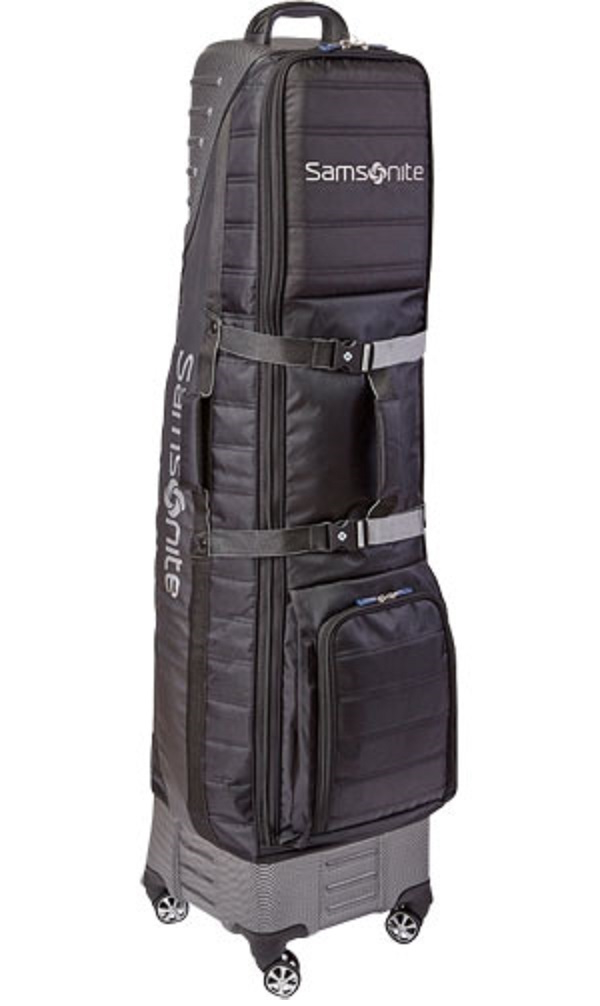
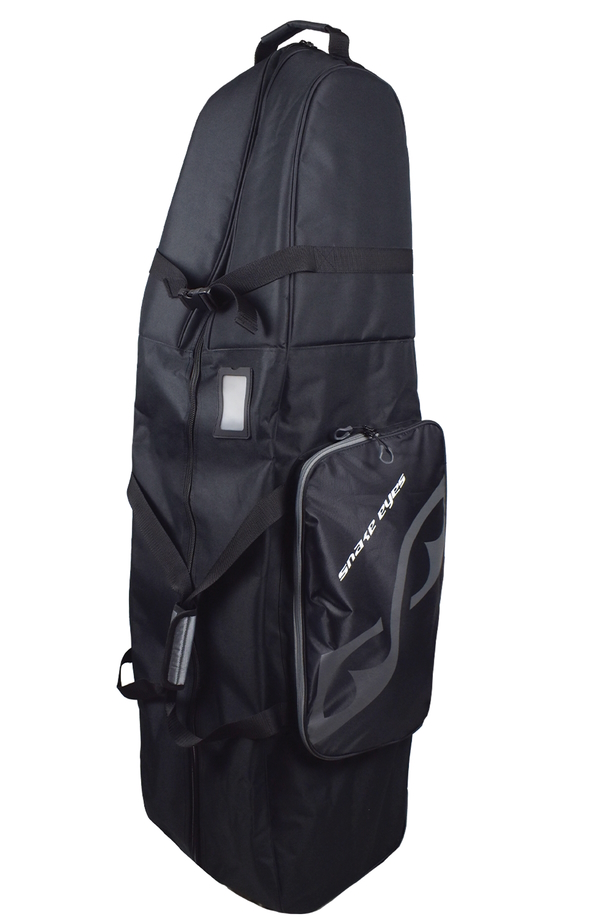
Soft Case Travel Covers
Soft Cases, on the other hand, blend protection with convenience. Crafted primarily from padded fabrics, these bags are both lightweight and malleable. Their inherent flexibility often grants a tad more packing space, perfect for those extra items or added protective layers you wish to include.
And while they might lack the impenetrable armor of hard cases, high-quality soft cases come with generous padding, particularly around vital areas such as where club heads rest. What’s more, their design often incorporates features like wheels and multiple handles, enhancing their portability and ease of transport.
Airport Baggage Policies For Traveling With Your Golf Bag
Regardless of your choice between hard and soft cases, always research the baggage policies of the airlines you’ll be traveling with. This ensures that your chosen bag aligns with the allowed dimensions and weight limits, preventing unexpected fees and ensuring a seamless check-in experience.
Here is a list of airline baggage policies for golf bag checking, along with links to the relevant pages:
- American Airlines: You can travel with one golf bag containing golf clubs, golf balls, golf tees, and one pair of golf shoes. However, you cannot travel with “swingless” golf bags or golf bags without clubs.
- Southwest Airlines: Golf bags in a passenger-provided hard case, including clubs, balls, and shoes, are accepted. Hooded bags or those in a soft-sided case are conditionally accepted. Overweight charges apply for bags over 50 pounds.
- United Airlines: You can fly with most sports equipment, including golf bags, which count towards your checked bag allowance and may be subject to fees. 3
- Other airlines: Most airlines allow you to bring one golf set per passenger, which counts as a standard checked bag and may contain no more than one golf bag and one set of golf clubs. Fees may apply.
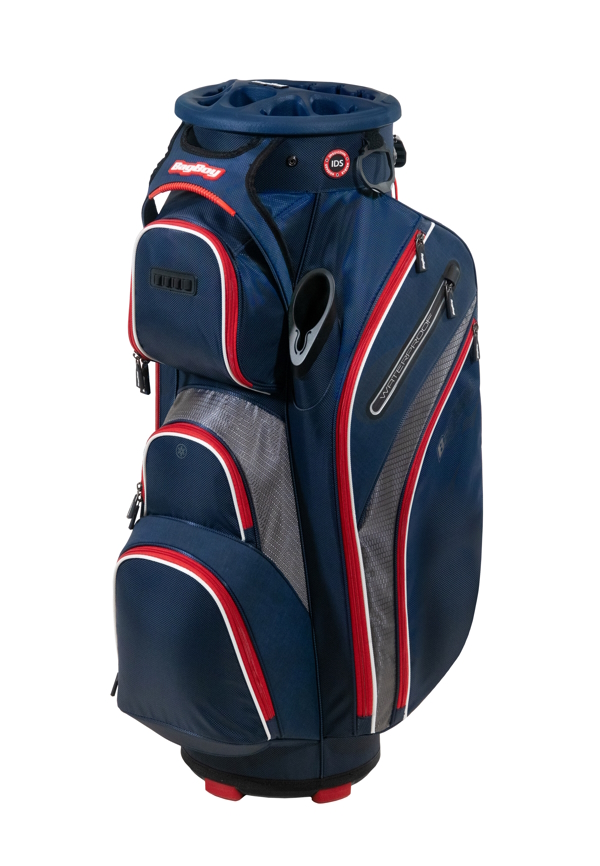
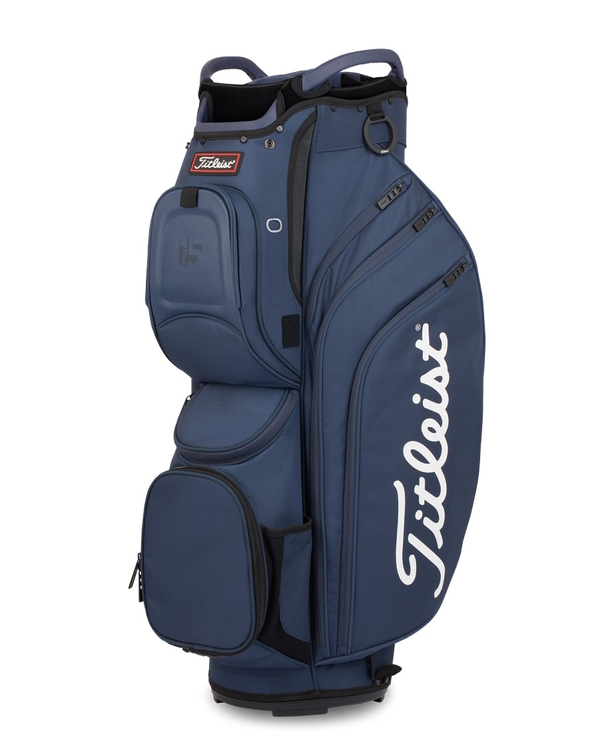
Checking in Your Golf Bag
Once at the airport, here are some traveling tips to follow:
- Arrive Early: Given their size, golf bags may need extra scrutiny or special handling. Providing the airport staff with ample time to process your equipment is always a good idea.
- Tag Properly: Ensure your golf bag has a clear, durable luggage tag with your name, address, and contact information. This helps in the rare event of misplaced luggage.
- Inform the Airline: Inform the staff that you’re traveling with golf equipment when checking in. Some airlines might have specific procedures or designated areas for such baggage.
Once you’ve landed, collect your golf bag from the designated oversized luggage area rather than the regular carousel. Inspect it for any damages before leaving the airport. If you notice any issues, report them immediately to the airline’s customer service desk.
FAQs About Flying or Traveling With Your Golf Clubs
Can I take my golf clubs on a plane?
Check with your airline before you fly. However, in general, you can bring your golf clubs on the flight, but not as carry-on luggage. Most airlines treat golf clubs as standard luggage, meaning there’s a weight limit (usually 50 pounds) but no oversized baggage fee. Also, check the airline’s policies on lost or damaged clubs before flying.
Do airlines charge more for golf clubs?
Many airlines treat golf clubs (in a travel bag) as check-in luggage. However, different airlines may have different fees for checking in golf clubs as luggage. Here are some examples of specific fees charged by various airlines for golf clubs:
- Southwest Airlines: Golf clubs can be checked in free of charge in place of the standard free baggage allowance.
- Alaska Airlines: Standard checked baggage fees apply, but the oversized baggage fee and overweight baggage fees are waived.
- American Airlines: Standard checked bag fees apply up to 50 lbs / 23 kgs and 126 in / 320 cm (length + width + height). The overweight fee applies from 51 lbs / 23 kgs to 70 lbs / 32 kgs.
- United Airlines: Checked bag fees apply to golf clubs unless otherwise noted.
- Delta Airlines: Standard checked bag fees apply, and additional fees may apply if the golf bag contains items other than the approved items.
- British Airways: Charges £30 for golf luggage up to 32 kg.
- EasyJet: Charges £37 for golf luggage up to 20 kg.
- Ryanair: Charges £30 for golf luggage up to 20 kg.
- Iberia Air: Charges £40 for golf luggage up to 23 kg.
How do you secure golf clubs on a plane?
To secure your golf clubs on a plane, follow these steps:
- Use a golf club travel bag or case: Hard-shell cases provide better protection for your golf clubs during transportation. Soft-shell bags are also an option, but they may not offer the same level of protection.
- Pack your clubs tightly: Fill any empty spaces in your golf bag with extra golf towels, bubble wrap, or packing material to prevent your clubs from moving around during the flight.
- Protect clubheads: Cover your clubheads with headcovers or wrap them in towels, bubble wrap, or similar material to prevent damage.
- Use a stiff-arm or similar device: A stiff-arm is a pole with an umbrella-shaped disc at the end that fits inside a soft golf bag to brace against impact. These add vertical strength to your travel bag, protecting your clubs from stress. If you don’t have a stiff-arm, you can use a sturdy broomstick or telescoping ski pole as a substitute.
- Remove adjustable wood heads: If your clubs have adjustable wood heads, remove them and store them separately, either in a pocket of the bag or in your carry-on luggage.
Final Thoughts On Traveling With Your Golf Clubs
Selecting the right protection for golf equipment during travel can be paramount. It’s crucial to differentiate between standard bags and their travel-ready counterparts. Weighing the resilience of hard containers against the flexibility of soft ones is essential. Air travel stipulations add another layer to this choice. A well-informed decision ensures smooth journeys and ready-to-play golf gear upon arrival.
Writer/Editor: Danny Kapp is a passionate golf enthusiast and an 8-year veteran golf blog writer for Rock Bottom Golf, offering his unique perspective on the game. With a keen eye for detail, he covers various aspects of golf, ranging from technical insights to the latest trends in golf equipment and golf technology.





Pingback: Oakley Golf: A Revolution From Vision to Fashion - Golf Blog | RockBottomGolf.com
Pingback: Snake Eyes Apparel GIVEAWAY! Enter Daily To Win! - Golf Blog | RockBottomGolf.com
Pingback: Your Guide to the Season's Best Golf Getaways
Pingback: Winter Golf Guide: Tips for Playing on Open Courses - Golf Blog | RockBottomGolf.com
Pingback: DIY Golf Decor Guide: Creative Golf-Themed Projects - Golf Blog | RockBottomGolf.com
Pingback: Navigating the Golf Ball Rollback: Implications and Insights - Blog | Rock Bottom Golf
Pingback: Golf Putter Head Shapes: What the Pros Prefer and Why? - Blog | Rock Bottom Golf
Pingback: Golf Bags - Lightweight vs. Heavyweight: Which One Suits You?
Pingback: Best Golf Clubs for All Skill Levels
Pingback: Must-Have Golf Accessories for a Stress-Free Holiday Getaway - Blog | Rock Bottom Golf
Pingback: Do You Really Need All 14 Clubs? Build a Minimalist Golf Set
Another idea when traveling with a soft bag. I take the adjustable head off of the driver, ( assuming that feature) and carefully wrap it in plastic and insert it in an inside pocket. This will prevent breakage to the one club which sticks out the most in the bag. And yes, it happened to me and the airline offered only pennies on the dollar for reimbursement.
Hey James! That’s a great tip when traveling with club for sure
Thanks for the tip!